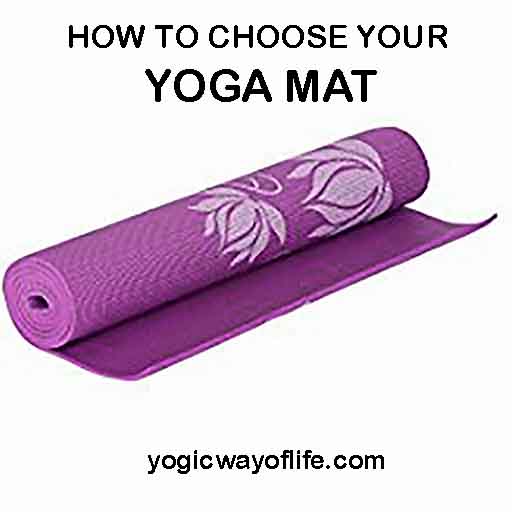Yoga Mat has become an essential part of a yogi’s kit. Suited for asanas, pranayama and meditation, yoga mats have become popular in the recent years.
In ancient times, yoga was performed either on bare floor, grass or on yoga mats made of natural material like straw, kusha grass, palm leaves or even animal skin. Tiger skin was popular among yogis for practice of meditation, which today is not recommended because of concerns about animal protectionism.
At one point, towels, cotton mats and blankets were also used as yoga mats which gave way to rubber and plastic (PVC) mats or the sticky mats.
How to select / buy yoga mat?
Grip and Feel
Most of the yoga mats sold today are made of PVC, also called the sticky mats. For a good grip during practice of yoga poses, the texture is also important. Texture with raised bumps or roughness can give a good grip for your feet and hands. The key is that while performing asanas, the body parts should not slip. You should have a firm grasp of the floor. For example when you are doing a Parvatasana, Kandharasana or Adho Mukha Svanasana (downward dog pose) the palms and feet should not slip forward/backward on the mat. Rubber and PVC yoga mats prevent the slipping of the mat over the floor overcoming the problem faced with cotton mats.
Thickness
Yoga mats come in various thickness. The thinnest ones can be just 1/16th of an inch or less than 2mm. It is easily foldable, has least weight and great as travel yoga mats. Thin mats may lack the cushioning effect and may be hard on your knees and elbows while doing yoga postures like Marjariasana, Spinx pose, Makarasana, etc.
Most of the yoga mats sold are about 1/8th inch in thickness and has a good cushioning effect, but takes more room in your travel bag.
Thicker yoga mats may be around 1/4th of an inch. They have good cushioning effect for sitting poses. But have disadvantages when you are doing balancing poses like Vrikshasana or Sirsasana, the head stand. If you select a thicker mat, make sure the material is tougher to overcome the problem.
Length and Width
Most yoga mats have dimensions of 72 inches or 182 cm long and width of 24 inches or 60 cm. This is sufficient for most people. Those who are taller may want a longer mat of about 7 feet (84 inches). Also, for practicing hand balances, one may prefer a wider mat of 30 or 36 inches. Some sites allow you to custom order your mats with preferred length and width. Also, those who practice Surya Namaskara or the sun salutation may prefer a longer yoga mat.
Ease of Carrying
Most yoga mats come with a carrying case made of thin fabric, plastic, etc. Thinner mats are easier to carry for travels. Most mats can be rolled and tucked into a yoga mat cover or bag.
Eco-friendliness
If you are looking for eco-friendly yoga mats, avoid plastic or PVC mats which doesn’t disintegrate quickly in landfills. Try using mats made of cotton, jute or rubber. Also, try to avoid animal skins as ahimsa or non-violence is an essential part of Yama in Yoga. Most eco-friendly mats are made or jute, rubber and cotton fabric.
Once you have looked at the above factors, you can choose your yoga mat based on the design, color, style, pattern and price. There are numerous online sites selling yoga accessories.
How to clean your yoga mat?
Yoga mat can get dirty with dust and sweat over a period of time. Rubber and plastic mats can be washed in warm soap water and dried. One can also swipe with cloth dipped in warm water and air dry. Some may be machine washable. See the instructions before you purchase one.
Yoga mats have today become an essential part of the yoga accessories for all yoga enthusiasts.

